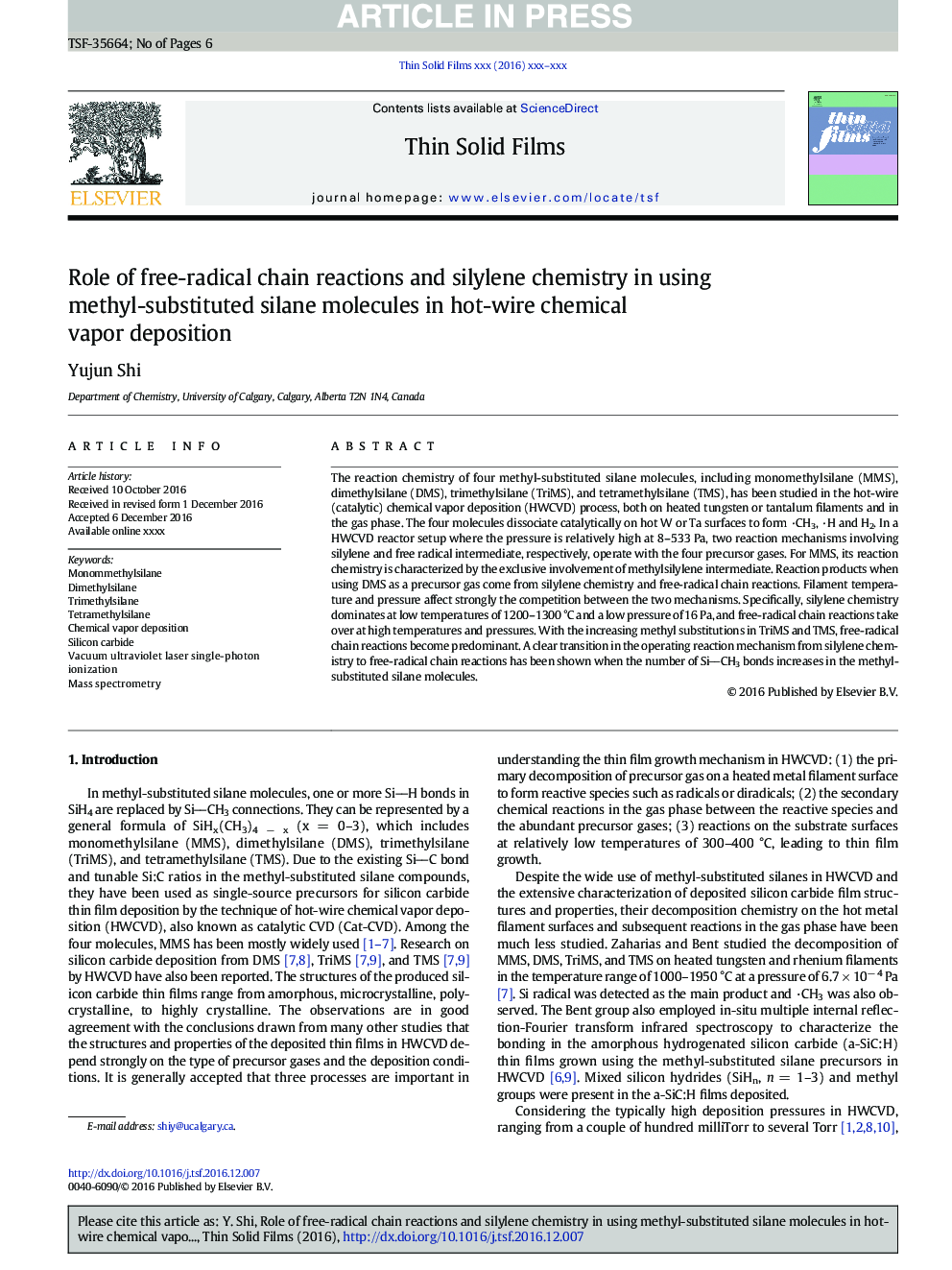| Article ID | Journal | Published Year | Pages | File Type |
|---|---|---|---|---|
| 5465967 | Thin Solid Films | 2017 | 6 Pages |
Abstract
The reaction chemistry of four methyl-substituted silane molecules, including monomethylsilane (MMS), dimethylsilane (DMS), trimethylsilane (TriMS), and tetramethylsilane (TMS), has been studied in the hot-wire (catalytic) chemical vapor deposition (HWCVD) process, both on heated tungsten or tantalum filaments and in the gas phase. The four molecules dissociate catalytically on hot W or Ta surfaces to form ·CH3, ·H and H2. In a HWCVD reactor setup where the pressure is relatively high at 8-533 Pa, two reaction mechanisms involving silylene and free radical intermediate, respectively, operate with the four precursor gases. For MMS, its reaction chemistry is characterized by the exclusive involvement of methylsilylene intermediate. Reaction products when using DMS as a precursor gas come from silylene chemistry and free-radical chain reactions. Filament temperature and pressure affect strongly the competition between the two mechanisms. Specifically, silylene chemistry dominates at low temperatures of 1200-1300 °C and a low pressure of 16 Pa, and free-radical chain reactions take over at high temperatures and pressures. With the increasing methyl substitutions in TriMS and TMS, free-radical chain reactions become predominant. A clear transition in the operating reaction mechanism from silylene chemistry to free-radical chain reactions has been shown when the number of SiCH3 bonds increases in the methyl-substituted silane molecules.
Related Topics
Physical Sciences and Engineering
Materials Science
Nanotechnology
Authors
Yujun Shi,
